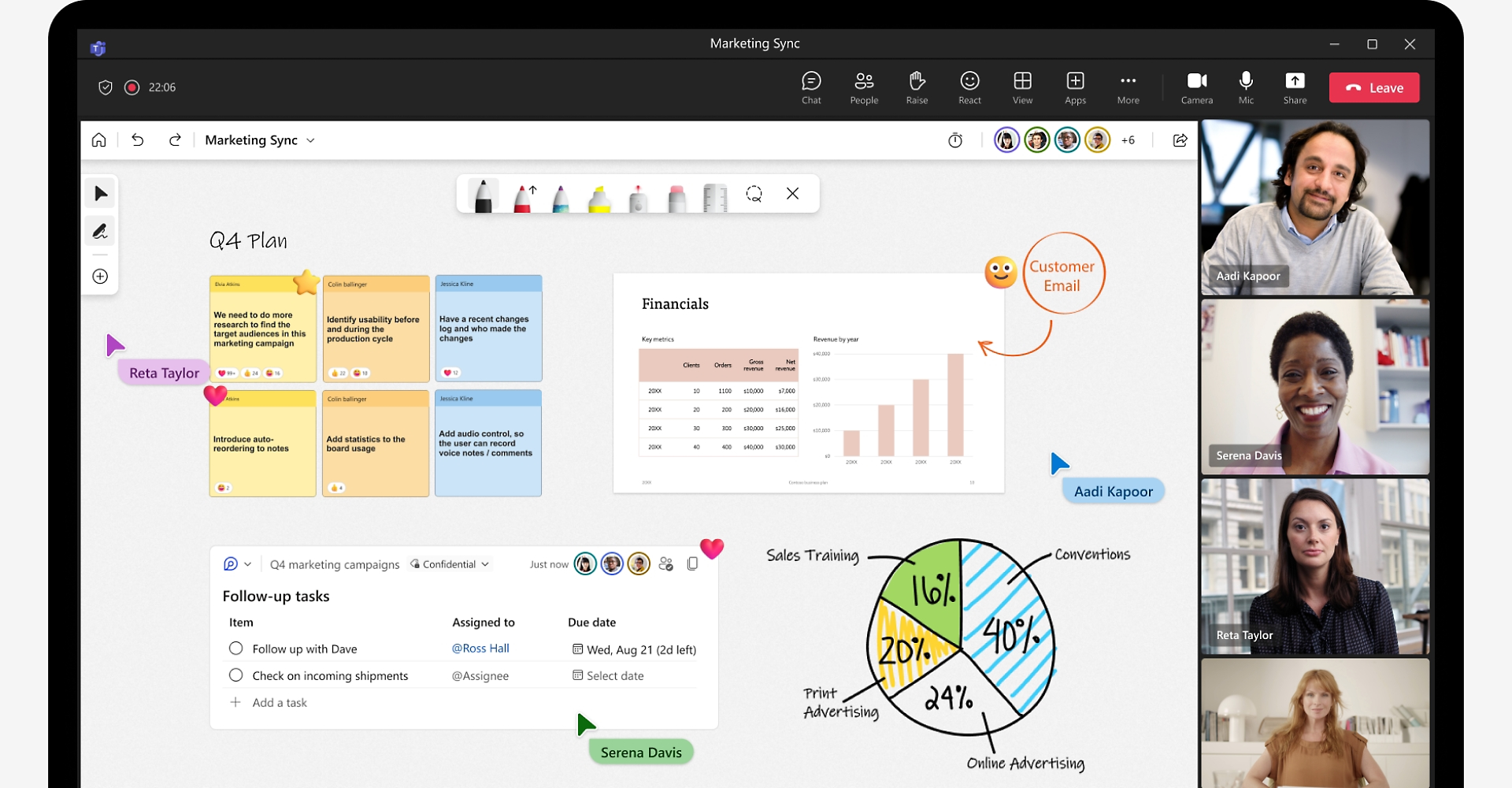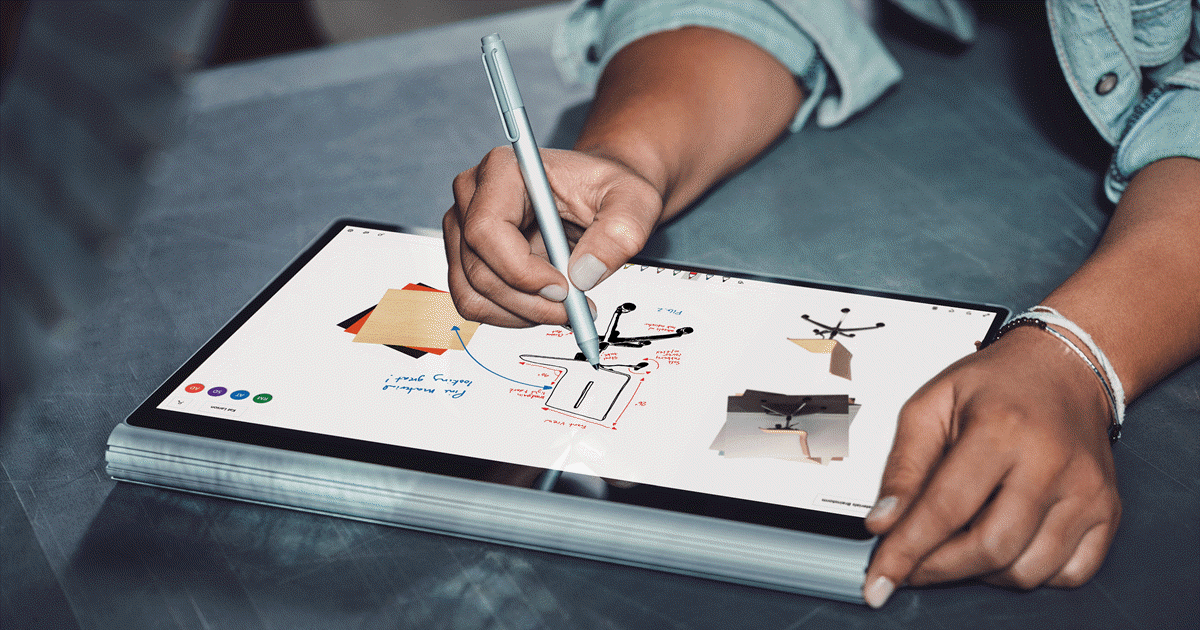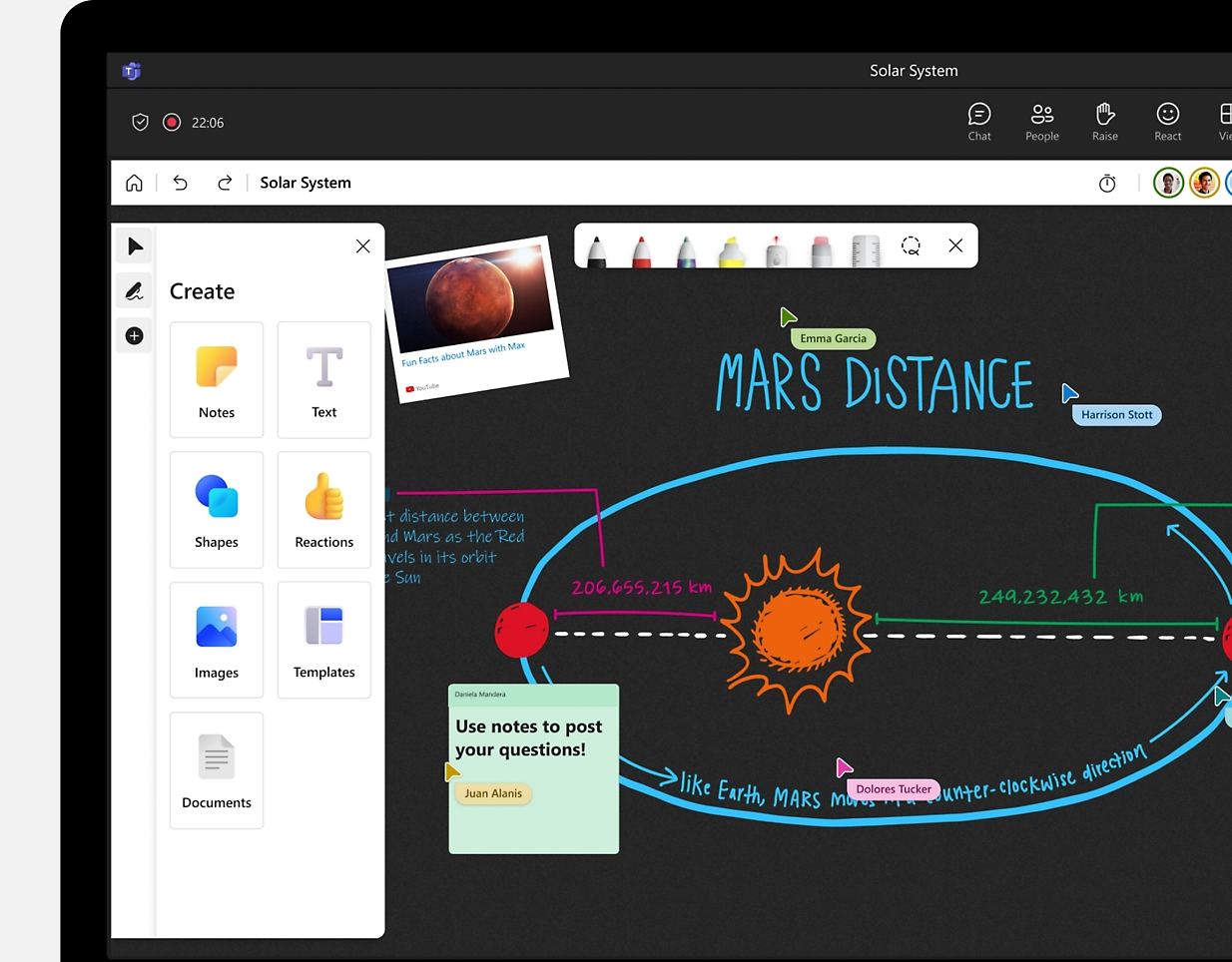Author: Chase Iaconelli
Date: 06/17/2024

A screenshot of Microsoft Whiteboard being used for a Marketing Project by work associates.
A Communicator’s Playground
A Communicator’s Playground
Upon reading Chapter 2 (Communicators) in the Sail the & C’s textbook, Microsoft Whiteboard and its far-reaching applicability for teachers and students was something that pronounced itself. Microsoft Whiteboard is a versatile program that enables people to work on projects and presentations in real time, with a landscape that is rife with potential and creativity. Students can harness the power of their ideas by adding graphics, text, images, animations, all while communicating with their partners during the creative process. The environment of Microsoft Whiteboard is fluid and open, users are able to manipulate the canvas of their project in a way to invites input and changes on go, allowing for alterations to be made seamlessly. Not only does Microsoft Whiteboard encourage students to facilitate communication, but it does so in a manner that fosters educational engagement with the class content. In the age of technology, students have access to more information than ever before, and Microsoft Whiteboard channels this reality by allowing its users to use the application on any device, so that once you leave your computer, you can work on the project on your phone, tablet, or even virtual reality headsets.


Primary Features & Educational Value
In academia and professional development, one of the pervasive struggles people face is the effectiveness of brainstorming and constructing a plan. There are many avenues that people can take to ease these struggles, but only some offer the tools that Microsoft Whiteboard does. From its colorful platform of notetaking to the mechanisms of video and voice chat, the displayed whiteboard is meant to serve as a blueprint for those seeking detailed and nuanced collaboration with their partners to integrate their ideas from the abstract to reality. Microsoft Whiteboard allows multiple users to operate simultaneously within the space, increasing efficiency and effectiveness as it relates to time-sensitive deadlines. The educational value of the application pronounces itself when one considers how students might use the whiteboard for storyboards and group projects that demand communication and collaboration. Teachers can track their student’s progress as they work through the differences in their approaches and watch their endeavors evolve from rough ideas into a fully formed and cohesive direction. Since the whiteboard allows an organic expression of ideas, students can divide their contributions to the project into tasks. One student can work on the text, another can input pictures, and another can find documents or videos to include, providing a well-rounded and all-encompassing environment for equal participation.

The Accommodation of Diverse Learners
There is an aspect of this application that serves a greater purpose for the multiple intelligences of diverse learners in the classroom. Neurotypical learners will surely benefit from using Microsoft Whiteboard. However, those who have learning disabilities such as ADHD, Dyslexia, or Autism can find much more profound meaning in this program as well. Visual learners might need help with the often rigid and uninspired classroom lessons using Microsoft Whiteboard due to its use of colorful images, graphics, drawing functions, and mind maps. Those with auditory processing difficulties may be eased by the fact that they can use the whiteboard to record lessons or lectures. Kinesthetic learners can harness the platform’s hands-on features so they will feel more connected to the course’s content. Moreover, those who struggle with the communication element of schooling will find encouragement in the exciting aspects of collaboration and virtual involvement.
Microsoft Whiteboard, in addition to all of the programs that Microsoft Education offers, gives students the freedom to express themselves in a new and creative domain that differentiates the fundamental lessons of the classroom. It enables them to build their critical thinking skills and connection to their fellow students as they navigate the challenges and trials of their educational journey. This is just one more tool teachers can use to further the innovation of how content is delivered and the new ways that students interact with it.